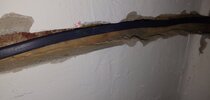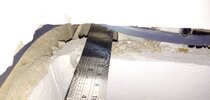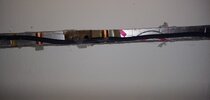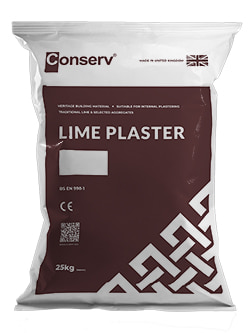- Joined
- 4 Aug 2020
- Messages
- 20
- Reaction score
- 2
- Country

Hi there,
I've decided to fill in the chases myself after I hired an electrician to install additional sockets in two rooms which are located on the first floor of a semi detached house.
My original plan was to fill in the chasing with Thistle Bonding and then finish with 2 thin coats of Gyproc Easifill.
Before embarking on this task, I decided to look at the substrate behind the chasing and I can see a bricks. Im reticent to start, as I'm sure I read somewhere that if the internal wall is backing on to an external wall then I need to use cement instead of Bonding.
Second of all, I can see a massive gap at the corner of the wall, where the long section meets the short section of the wall. Also I can see copper pipes at the back of the chase on the short section of the wall. The bathroom is on the other side of the wall.
My questions are:
1) Is Thistle Bonding the correct product to use, where the other side of the wall is external?
2) How do I fill in the large gap at the back, to simply stop the bonding from simply falling away into the gap?
3) Do I need to approach filling in the chase differently if there are copper pipes at the rear of the chase?
Many thanks
I've decided to fill in the chases myself after I hired an electrician to install additional sockets in two rooms which are located on the first floor of a semi detached house.
My original plan was to fill in the chasing with Thistle Bonding and then finish with 2 thin coats of Gyproc Easifill.
Before embarking on this task, I decided to look at the substrate behind the chasing and I can see a bricks. Im reticent to start, as I'm sure I read somewhere that if the internal wall is backing on to an external wall then I need to use cement instead of Bonding.
Second of all, I can see a massive gap at the corner of the wall, where the long section meets the short section of the wall. Also I can see copper pipes at the back of the chase on the short section of the wall. The bathroom is on the other side of the wall.
My questions are:
1) Is Thistle Bonding the correct product to use, where the other side of the wall is external?
2) How do I fill in the large gap at the back, to simply stop the bonding from simply falling away into the gap?
3) Do I need to approach filling in the chase differently if there are copper pipes at the rear of the chase?
Many thanks




